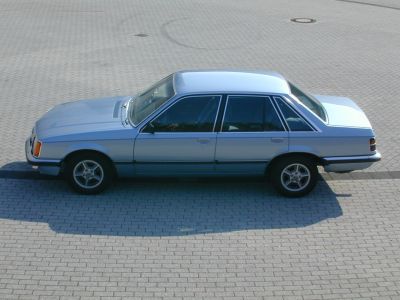 1968 Citroen ID III Dimensions, Size & Specs
1968 Citroen ID III Dimensions, Size & SpecsMeasurements of the 1968 Citroen ID III, engineered for optimal performance and comfort
| Dimensions | |
|---|---|
| Length: | 4839-4870 mm190.5-191.7 in15.9-16.0 ft |
| Width: | 1791-1800 mm70.5-70.9 in5.9-5.9 ft |
| Height: | 1473 mm58.0 in4.8 ft |
| Ground Clearance: | 146 mm5.7 in0.5 ft |
| Trunk Capacity: | 496 liter17.5 cu ft |
| Weight Specifications | |
| Curb Weight: | 1265-1295 kg2789-2855 lbs |
| Maximal permitted Weight: | 1760 kg3880 lbs |
The Citroen ID III is a classic sedan produced by Citroen from 1968 to 1975. This generation of the ID series encapsulates the French automotive design and engineering ideals of the late 1960s and early 1970s. The vehicle's length ranges from 4839 to 4870 millimeters (190.5 to 191.7 inches), offering a substantial presence on the road while maintaining a balanced and elegant silhouette. With a width between 1791 and 1800 millimeters (70.5 to 70.9 inches), the ID III provides ample cabin space, contributing to passenger comfort without compromising maneuverability. Height measurements are quite consistent, spanning from 1470 to 1473 millimeters (57.9 to 58.0 inches), giving the sedan a low, aerodynamic profile typical of Citroen's innovative design philosophy of that era. Weighing in at a curb weight between 1265 and 1295 kilograms (2790 to 2855 pounds), the ID III balances solid build quality with manageable weight for improved fuel efficiency and handling dynamics. The vehicle supports a maximum weight of 1760 kilograms (3880 pounds), indicating its capability to carry passengers and cargo efficiently. Notably, the luggage compartment boasts a generous capacity of 496 liters (approximately 17.5 cubic feet), reflecting the vehicle's practical design focus on everyday usability and travel convenience. Ground clearance stands at 146 millimeters (5.7 inches), providing a comfortable ride height suited for varied road conditions while maintaining the classic low stance of the sedan. Overall, the Citroen ID III's dimensions and specifications make it a distinguished vehicle in the family sedan category of its time, combining style, space, and practical utility that continues to attract vintage car enthusiasts and collectors.
Discover the standout features that make the 1968 Citroen ID III a leader in its class
Have a question? Please check our knowledgebase first.
The Citroën ID III sedan, produced between 1968 and 1975, has a length ranging from 4839 mm to 4870 mm (approximately 190.5 to 191.7 inches). This length places the car solidly in the mid-to-large sedan category for its era. The slightly varying lengths reflect minor model updates or trim variations throughout its production period. Compared to modern vehicles, while not as long as today's largest sedans, the ID III was spacious and offered ample interior room, highlighting its focus on comfort and practicality during its time.
The width of the Citroën ID III varies from 1791 mm to 1800 mm (about 70.5 to 70.9 inches), which offers a good balance between interior space and drivability. This width ensures comfortable seating for passengers without making the car overly bulky for the roads and parking spaces of its era. The broad stance also contributes to better stability when cornering. For a 1960s-70s sedan, these dimensions helped the ID III stand out with a confident road presence while remaining practical for everyday use.
The height of the Citroën ID III ranges from 1470 mm to 1473 mm (57.9 to 58 inches). This relatively moderate height offers ample headroom for most passengers, ensuring comfort during both short and long journeys. The sleek profile helped reduce aerodynamic drag for improved fuel efficiency compared to boxier cars of the same era. Despite its somewhat taller height compared to modern low-profile sedans, the ID III balances interior space and exterior aerodynamics effectively, which is a hallmark of Citroën's innovative design philosophy.
The Citroën ID III weighs between 1265 kg and 1295 kg (approximately 2790 to 2855 lbs) curb weight. This relatively lightweight for a mid-size sedan of its time contributed to nimble handling and decent fuel efficiency, as well as good braking performance. The weight balance was carefully managed to promote comfort-centric driving dynamics typical of Citroën's approach, with smooth suspension setups and steady control. It also allows the car's engine to perform efficiently while maintaining a smooth ride quality.
The maximum weight, also known as the gross vehicle weight (GVW), for the Citroën ID III is 1760 kg (approximately 3880 lbs). This figure includes the vehicle's curb weight plus passengers, fuel, luggage, and any additional cargo. Understanding this limit is important for safety and performance since exceeding the GVW can affect braking distances, suspension performance, and overall vehicle handling. The ID III's GVW is quite typical for a mid-size sedan from its production era, ensuring it can comfortably carry a full complement of occupants and luggage.
The Citroën ID III provides a generous luggage capacity of 496 liters (about 17.5 cubic feet). This sizable trunk space reflects the car's practical design focus and is quite competitive among mid-size sedans from the late 1960s and early 1970s. The large luggage space enabled comfortable long-distance travel for families or groups, indicating that the ID III was designed with utility in mind without compromising passenger comfort. The trunk space was a highlight for buyers seeking versatility alongside style.
The Citroën ID III features a ground clearance of 146 mm (approximately 5.75 inches). This moderate ride height is sufficient to handle typical road surfaces comfortably, including slight bumps and uneven pavements common in urban and rural environments of its time. The clearance supports stable handling without compromising the aerodynamic benefits of a relatively low profile. Moreover, it is enough to prevent frequent scraping during entrances to ramps or speed bumps, balancing drivability and the innovative suspension technology Citroën was known for.
The Citroën ID III, with its length around 4.83 to 4.87 meters (190.5 to 191.7 inches), width about 1.79 to 1.8 meters (70.5 to 70.9 inches), and height just under 1.5 meters (approximately 58 inches), fits well within the dimensions of a typical modern standard garage. Standard garages usually measure about 6 meters (20 feet) in length and around 2.4 to 3 meters (8 to 10 feet) in width, so the ID III has ample clearance for parking, opening doors, and maneuvering. Hence, owners of this classic sedan generally do not face size-related parking issues in typical residential garages.
The Citroën ID III built upon the foundation laid by the earlier ID and DS series models, offering improvements in size, comfort, and technology. It retained the iconic hydropneumatic suspension system, providing superior ride comfort. Dimensionally, the ID III was slightly larger than its immediate predecessors, especially in length and luggage capacity, enhancing passenger space and practicality. The ID III's design refinement included subtle changes for a more modern aesthetic and better aerodynamics. Overall, it represented an evolutionary step forward, improving usability and comfort while keeping the unique character of Citroën's classic ID line.
When compared to contemporary competitors like the Peugeot 504, Ford Cortina, or Vauxhall Victor, the Citroën ID III stood out for its distinctive combination of size, technology, and comfort. Its length of about 4.85 meters and generous interior space were competitive among mid-size sedans. The ID III's advanced hydropneumatic suspension system offered exceptional ride comfort unmatched by most rivals. While its curb weight was slightly higher due to this technology, the balance of smooth ride quality and handling was a hallmark. The car's roomy trunk and innovative features made it both practical and refined, setting it apart from more conventional rivals.
Discover similar sized cars.

| Production: | 1962-1967 |
|---|---|
| Model Year: | 1962 |
| Length: | 4830-4838 mm190.2-190.5 in |
| Width: | 1790 mm70.5 in |
| Height: | 1470 mm57.9 in |

| Production: | 1964-1968 |
|---|---|
| Model Year: | 1962 |
| Length: | 4874 mm191.9 in |
| Width: | 1803 mm71.0 in |
| Height: | 1470 mm57.9 in |

| Production: | 1967-1975 |
|---|---|
| Model Year: | 1968 |
| Length: | 4874 mm191.9 in |
| Width: | 1803 mm71.0 in |
| Height: | 1470 mm57.9 in |

| Production: | 1967-1977 |
|---|---|
| Model Year: | 1968 |
| Length: | 4780 mm188.2 in |
| Width: | 1760 mm69.3 in |
| Height: | 1410 mm55.5 in |

| Production: | 1977-1983 |
|---|---|
| Model Year: | 1977 |
| Length: | 4860 mm191.3 in |
| Width: | 1800 mm70.9 in |
| Height: | 1430 mm56.3 in |

| Production: | 1978-1982 |
|---|---|
| Model Year: | 1978 |
| Length: | 4811 mm189.4 in |
| Width: | 1728 mm68.0 in |
| Height: | 1415 mm55.7 in |

| Production: | 1982-1989 |
|---|---|
| Model Year: | 1982 |
| Length: | 4783 mm188.3 in |
| Width: | 1758 mm69.2 in |
| Height: | 1377 mm54.2 in |

| Production: | 1983-1986 |
|---|---|
| Model Year: | 1983 |
| Length: | 4860 mm191.3 in |
| Width: | 1800 mm70.9 in |
| Height: | 1430 mm56.3 in |
